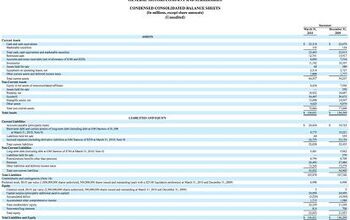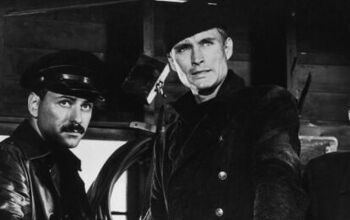General Motors Death Watch 38: General by Name
While GM models continue to debut and disappear like Manolo Blahniks, the Chevrolet Corvette stays the course, slowly evolving towards excellence. To mark the retirement of Chief Engineer Dave Hill, Car Czar Bob Lutz posted a short honorific on GM's fastlane blog: "Dave was often disruptive, stubborn, unwilling to take direction, unwilling to take advice, unwilling to accept constraints or limits — in other words, the perfect man for the job." In other other words, Hill was a successful guardian of the Corvette flame DESPITE GM, not because of it.
Lutz' unintentional condemnation of his employer's corporate culture won't surprise anyone who's had dealings with The General. I've received dozens of emails from GM workers and suppliers. They describe an organization so complex it makes the legal system in Kafka's The Trial seem like basic addition. One story convinced me that the phrase "institutional paralysis" was coined by a seat bracket designer. Another persuaded me that "matrix management" and "total chaos" are synonymous. And another reminded me of A Confederacy of Dunces, and left me wondering why more GM managers haven't followed author John Kennedy Toole's example.
In all the discussion about GM's perilous financials, it's often forgotten that the company itself is a disaster. Think of it this way: no one at GM wakes up in the morning and says, right, let's go make some vehicles that are two product cycles behind the competition at a price that will bankrupt The General within the next year. [Mr. Hill would have probably sacrificed his left testicle to equip the 'Vette with Audi-esque soft touch plastics.] But something happens between morning muesli and Miller time that kills GM workers' creativity and stifles the company's competitiveness. That something is bureaucracy.
It's not about size. It's about focus. Toyota is living, breathing, money-making proof that a multinational automaker can produce millions of vehicles without tripping all over itself. To do so, to create an organizational structure lean enough to consistently produce genre-dominating cars, a carmaker must maintain laser-like focus. It must first decide EXACTLY what it wants to do, and then it must do it better than anyone else. As a corollary, the manufacturer must accept that it can't– shouldn't– do everything. It's about choosing your battles wisely, fighting them tenaciously and then protecting your territory with steadfast ferocity.
Domestically, GM has eight brands: Hummer, Buick, Pontiac, Cadillac, Saturn, Chevrolet, Saab and GMC. Which one of them has focus? Which one of them sells a coherent lineup, where every single model does [the same] one thing better than anyone else? Are all Chevy's economy cars? Do all Buicks lead their competition in interior quietness? Are all Pontiacs sexy? What do all Saabs, Saturns or GMC trucks do that no other vehicle in their class can match? Sure, all of GM's domestic brands sell cars that don't fall apart, get reasonable mileage, are reasonably comfortable and don't cost a fortune compared to the competition. But what's their unique selling point? Why bother buying one?
It's General Motors by name, general motors by nature. Once you go down that road, it's no wonder that the Chinese walls separating the brands disappear, and dozens of models across the eight brands emerge on their respective forecourts courtesy of the bloodless process known as badge engineering. Since all the cars within each of GM's eight brands must do everything pretty well, but none are asked to excel in any one area (save Hummer, but give it time), it makes perfect sense to save money by sharing management, designers, workers, models, parts, marketing, etc. Is it any wonder that GM's company culture rewards measured uniformity rather than breakthrough creativity?
Of course, inside any large organization, there will always be employees striving to realize their personal vision of product excellence– despite the internal forces ranging against them. Dave Hill was one of GM's "mavericks'; I'm sure he could tell plenty of stories of missed opportunities, needless compromise and administrative lethargy. In any case, Hill's success is an anomoly: the exception that proves the rule. Just think of all the nameless managers who were prevented from creating something great because they had to satisfy GM's overarching desire to do something good…
We've said it before. We'll say it again: GM must die. You can't fix this company. Even if GM's unions agreed to join their Chinese colleagues and work for $1.50 per hour, even if several of GM's 14 (count 'em 14) crossovers are a runaway success, the company is deeply, fundamentally, culturally flawed. Shuttering Buick, Saturn and Saab would help, but nothing can save a car company that's a jack of all trades and master of none.
More by Robert Farago
Latest Car Reviews
Read moreLatest Product Reviews
Read moreRecent Comments
- AZFelix 2015 Sonata Limited72k when purchased, 176k miles currentlyI perform all maintenance and repairs except for alignment, tire mounting, tire patching, and glass work (tint and passenger left due to rock hit). Most parts purchased through rockauto.com.Maintenance and repairs during three years of ownership:Front rotors and all brake pads upgraded shortly after purchase.Preparing for 17th oil change (full synthetic plus filter c.$50), one PCV valve.Timing & accessory belts, belt tensioner.Coolant full flush and change.Fibrous plastic material engine under tray replaced by aftermarket solid plastic piece $110.One set of tires (c.$500 +installation) plus two replacements and a number of patches due to nails, etc. Second set coming soon.Hood struts $30.Front struts, rear shocks, plus sway bar links, front ball joints, tie rod ends, right CV axle (large rock on freeway damaged it and I took the opportunity to redo the rest of items on this list).Battery c.$260.Two sets of spark plugs @ $50/set.Three sets of cabin and engine filters.Valve cover gasket (next week).Averages out to c.$1400 per year for the past three years. Minor driver seat bolster wear, front rock chips, and assorted dents & dings but otherwise looks and drives very well.
- 3-On-The-Tree 2014 Ford F150 Ecoboost 3.5L. By 80,000mi I had to have the rear main oil seal replaced twice. Driver side turbo leaking had to have all hoses replaced. Passenger side turbo had to be completely replaced. Engine timing chain front cover leak had to be replaced. Transmission front pump leak had to be removed and replaced. Ford renewed my faith in Extended warranty’s because luckily I had one and used it to the fullest. Sold that truck on caravan and got me a 2021 Tundra Crewmax 4x4. Not a fan of turbos and I will never own a Ford again much less cars with turbos to include newer Toyotas. And I’m a Toyota guy.
- Duke Woolworth Weight 4800# as I recall.
- Kwik_Shift_Pro4X '19 Nissan Frontier @78000 miles has been oil changes ( eng/ diffs/ tranny/ transfer). Still on original brakes and second set of tires.
- ChristianWimmer I have a 2018 Mercedes A250 with almost 80,000 km on the clock and a vintage ‘89 Mercedes 500SL R129 with almost 300,000 km.The A250 has had zero issues but the yearly servicing costs are typically expensive from this brand - as expected. Basic yearly service costs around 400 Euros whereas a more comprehensive servicing with new brake pads, spark plugs plus TÜV etc. is in the 1000+ Euro region.The 500SL servicing costs were expensive when it was serviced at a Benz dealer, but they won’t touch this classic anymore. I have it serviced by a mechanic from another Benz dealership who also owns an R129 300SL-24 and he’ll do basic maintenance on it for a mere 150 Euros. I only drive the 500SL about 2000 km a year so running costs are low although the fuel costs are insane here. The 500SL has had two previous owners with full service history. It’s been a reliable car according to the records. The roof folding mechanism needs so adjusting and oiling from time to time but that’s normal.


































Comments
Join the conversation